Wedge-spotted rasbora: description and subtleties of care
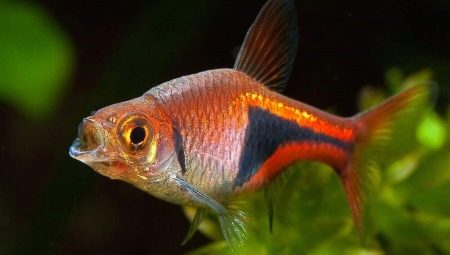
Today, it is possible to breed a wide variety of fish species in aquariums. Among the ornamental species that have long become popular inhabitants of closed reservoirs, the wedge-spotted rassbora deserves special attention, notable for its external attractiveness and unpretentious maintenance.
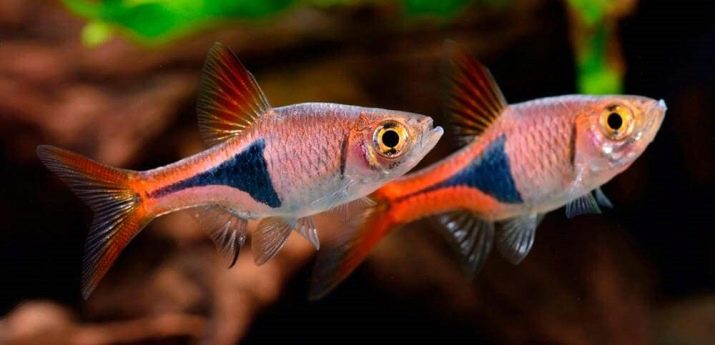
Description
The genus Trigonostigma is represented by an interesting fish species that have several names. Rasbora cuneiform, or heteromorph, is an inhabitant of reservoirs, characterized by a special approach to the process of procreation. The female of this species is not prone to chaotic laying of eggs, but prefers to neatly attach her eggs to the leaves of underwater vegetation. The homeland of Rasbora is considered to be Asian countries, namely: the territory of Thailand, Sumatra, the Java Peninsula.
In appearance, the fish stands out for its graceful and slightly elongated body, which is slightly flattened on the sides. The lateral fins of this species are transparent, bifurcated with a small notch. The fish has a silver or golden color, but in the natural environment there are individuals in which pink and even brown undertones appear in the shades of the scales. On the body of the wedge-spotted rasboa there is a characteristic black spot, according to which, with the help of visual examination, it is possible to determine the sex of the river inhabitant. As a rule, in males, the dark spot will contain sharp corners and will run along the entire abdomen of the individual, ending in the anal fin region. In female representatives, the dark blotch on the body does not stand out with sharp edges, and also along its length it does not reach the abdomen.The fins of the fish are crimson only in the dorsal part, the rest are painted in a pale pink color.
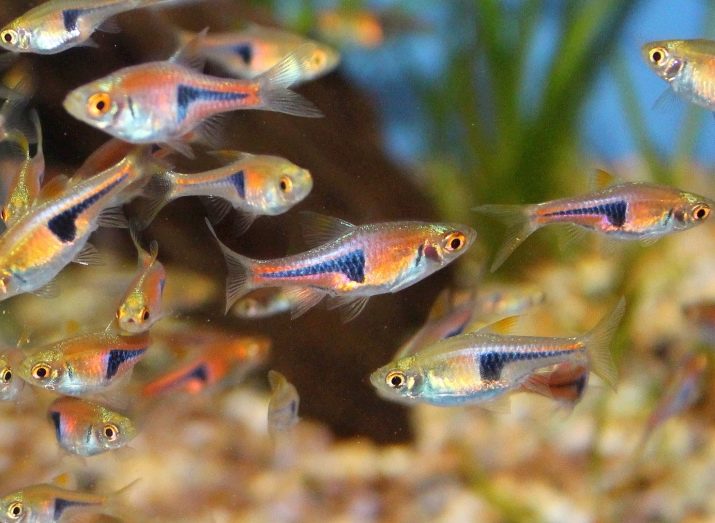
In the wild, Rasbora is found in shallow rivers and streams that are scattered in dense tropical thickets. However, aquarists have been breeding this species for quite some time. The lifespan of individuals varies between 2-4 years. According to the principle of habitation, the heteromorph is considered a schooling fish, and in the group of river inhabitants there are about 5-7 individuals of different sex. Fish will require a similar content in an aquarium. Rasbora is an active and mobile fish, and in relation to other inhabitants it does not stand out with aggression.
These tropical aquarium dwellers are quite susceptible to various diseases. But most often the fish gets sick as a result of errors related to its maintenance. Let's take a quick look at these diseases.
- Cold ailments. Representatives of this genus are sensitive to drops in water temperature, indicators below + 21C will be a critical mark for them. It is possible to determine that rassbora is sick by her behavior - the fish become lethargic, appetite decreases, the body changes color to dark, and the gill sinuses swell and increase in size. To combat the disease, you should establish aeration in the aquarium, as well as raise the water temperature to + 28C.
- Fungal rot. This disease has visual signs in the form of blue-white spots that will be concentrated on the fins. For treatment, use potassium permanganate and sodium chloride baths.
- Velvet disease. The golden dust covering the rasbora's body will indicate that the individual is suffering from a serious infection that is destroying its body. Treat the disease with antibiotics and increasing the level of aeration in the aquarium.


Today, several subspecies of heteromorphs are distinguished, which were bred as a result of artificial selection. Among them, the following are especially popular:
- Blue Harlequin, distinguished by a steel sheen in color;
- Black Harlequin - individuals of a dark color;
- Golden Harlequin, which received this name due to the golden color of the abdomen.
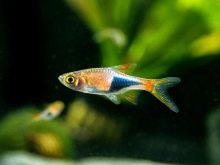
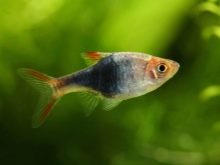
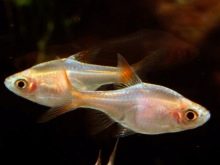
Content rules
With regard to care, when keeping a flock in an aquarium, wedge-shaped rassing, even for a novice aquarist, should not have problems with leaving. The main nuances regarding their cultivation are reduced to providing individuals with the following conditions.
- It would be more correct to contain this kind in rectangular tanks, the displacement of which will not exceed 40-50 liters. This applies to stacks of up to 10 pieces. If there are more than 15 representatives of this species in the aquarium, then its volume should be at least 80 liters.
- In the wild, aquarium fish prefer soft water, so at home they will need to provide conditions close to natural. So, the hardness of the water should be kept at the level of 5-12 dGH, while the acidity of the water will be in the range from 6 to 7 pH units.
- As for the temperature of the water in the tank, a level of 25-28 degrees will be a comfortable indicator for dispensing.
- A prerequisite for keeping fish will be a weekly replacement of at least a third of the water in the aquarium.
- Fine sand is a suitable substrate for aquarium species, but pebbles or gravel without coarse particles can also be used. The material on the bottom of the aquarium also needs to be changed regularly. It is worth refusing to purchase raw materials colored with artificial dyes, since the substances used can harm the inhabitants of the aquarium.
- Fish do not need intense and prolonged lighting, so an 8-hour day with diffused light will be optimal for them.
- To make rassbora feel comfortable in the aquarium, it is recommended to grow aquarium species of ferns, moss, hornwort in it. Stones and driftwood can be placed at the bottom; floating plants can be placed.
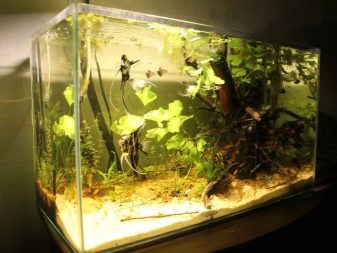
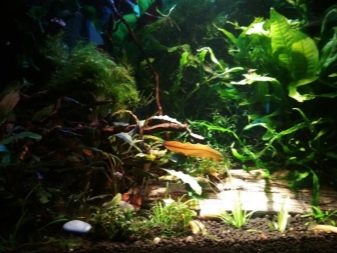
The presence of a filter in the tanks is mandatory.Thanks to such a device, it will be possible to provide a calm flow inside, comfortable for fish.
In the wild, the rasbora cuneiform feeds only on those small insects that live closest to the reservoir. Usually these are larvae, zooplankton, microworms. With regard to keeping at home, the aquarist can purchase any kind of dry or live food to feed the fish.
Rasbora is considered an omnivorous and unpretentious fish. However, an optimally balanced diet will still be important for her, so experienced aquarists recommend purchasing dry feed, daphnia, live cyclops. In addition, Rasbora perfectly uses low-fat varieties of cottage cheese or cheese, as well as steamed oatmeal.
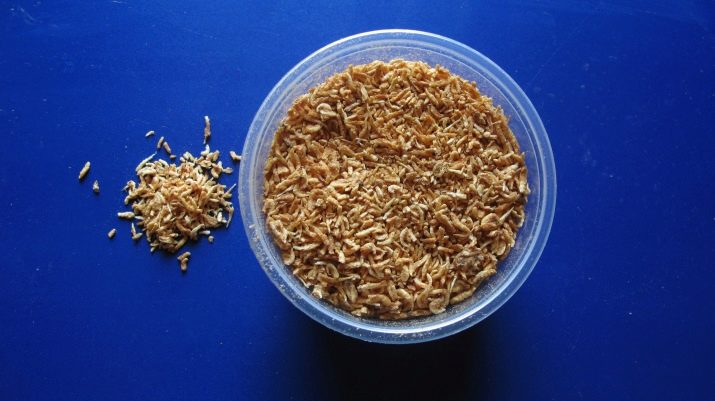
As a nutritious supplement once a week, they are recommended to give bloodworms or tubifex. The fish are fed once a day.
Compatibility with other fish
Due to the fact that rasbora stands out for its favorable attitude to other representatives of the marine fauna, it coexists well with a large number of different fish. Among those recommended for joint content, it is worth highlighting:
- neons;
- barbs;
- cockerels;
- iris;
- catfish corridors.
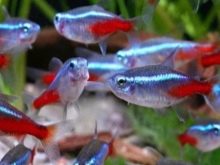
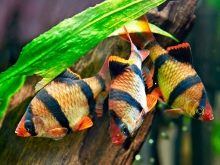
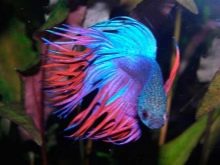
However, some fish breeds pose a threat specifically to rassing, so breeding them in the same aquarium can lead to sad consequences. Dangerous neighbors include:
- astronotuses;
- black pacu;
- scalar;
- kissing gur.
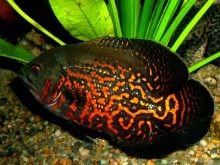
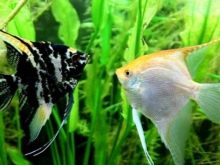
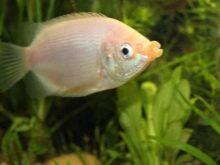
Special care should be taken when selecting large fish for breeding with heteromorphs, which they will regard as prey.
Breeding recommendations
For those who have a desire to have a heteromorph in their aquarium, caring for them and getting offspring will not seem like a burdensome task. There are some recommendations regarding breeding cuneiform spotting at home. Let's get acquainted with them.
- For procreation, it is necessary to choose representatives of the breed, whose age will vary within 9-12 months. It is desirable that males be older than females. This will increase the chances of having offspring.
- The selected individuals should be removed from the general flock in advance, having allocated separate reservoirs for them for 1-2 weeks. Females and males should be kept separately.
- Before spawning, fish should be provided with enhanced nutrition. Introduce daphnia, bloodworms, brine shrimp with alternation into the diet. Such food is enriched with all the necessary macro- and microelements that will promote good spawning, as well as high quality caviar.
- For spawning, you need to choose a small container with a volume of up to 15 liters. The bottom of the tank deserves special attention. It should be covered with a nylon separator mesh, where aquatic plants are strengthened. Moss and small fern species are best used. Fish of this breed prefer to spawn in dense thickets due to the peculiarities of the egg laying. The tank can temporarily place 5 to 7 plant specimens.
- Before settling fish, you should use a filter that will help to enrich the liquid with oxygen. For the laying to be successful, the water must be at a temperature of at least 28 degrees.
- It is best to place a clear glass lid on top to prevent fish from jumping out of the aquarium.

For spawning, a whole flock of individuals should be put into the container - up to 10 fish. It is better to transfer such manipulations to the evening, since the clutch of this breed usually takes place at 2-4 am, and lasts for 3 hours.
The female rasbora usually lays about 5 dozen eggs. The process itself takes place with the active participation of males, who drive the females closer to the plants, where laying and insemination takes place. Fish of this breed may suffer from stuttering, so they must be sent for spawning even in cases where it is not planned to get offspring in the future.
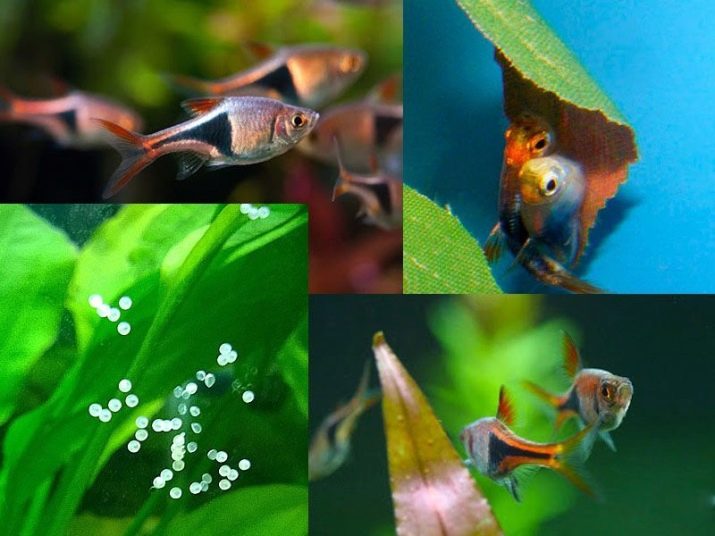
For breeding, keeping and feeding the cuneiform rasbora, see the next video.








